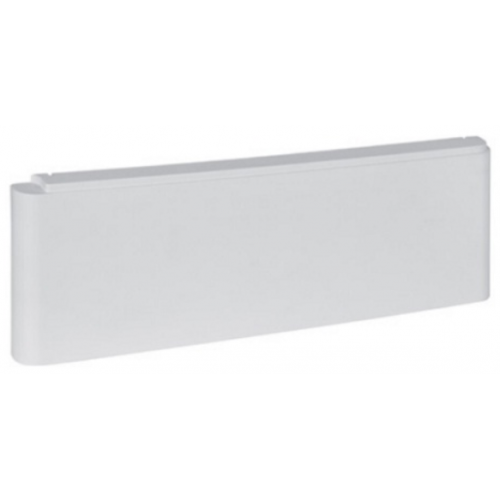
Brand
- M&S Collection 97.653
- Rhodes + Scholes 85.957
- Sandvik Coromant 48.881
- Portwest 43.075
- ELESA 39.987
- Adrial 37.461
- TopVue 22.108
- MTP Products 21.616
- Mascot 20.289
- VELUX 19.755
- EUROKRAFTpro 18.550
- Routledge 17.671
- Slingsby 17.198
- Russell 16.851
- Maroxe 16.160
- Blaklader 15.256
- Sealey 14.795
- Alcon 13.784
- Gildan 13.567
- Johnson & Johnson 13.125
- Fruit Of The Loom 12.737
- Gemini Interiors 12.004
- Nobody's Child 11.370
- Autograph 10.553
- Lyle & Scott 10.127
- White Stuff 9.982
- Life Essentials 9.795
- Regatta Professional 9.285
- Nike 9.151
- Dams 8.981
- ECCO 8.785
- B&C Collection 8.611
- Moon Magic 8.390
- Festo 8.379
- ORN 8.263
- Schneider Electric 7.992
- Kennedy 7.849
- Carpe Diem Beds 7.668
- TE Connectivity 7.520
- 3M 7.482
- Style and Chic 7.447
- Sid & Sam 7.381
- Merkel Designers 7.280
- Result 6.908
- Tyrell & Tyrell 6.889
- The Home Maker 6.801
- Air Jordan 6.732
- All Things Good 6.684
- Direct Imports 6.669
- TIMCO 6.624
- Qualfast 6.587
- BOSS 6.562
- Pour Moi 6.559
- Unbeatable Bargains 6.543
- Casper Homes 6.457
- Discount Dealers 6.419
- Millennium Furniture 6.412
- Merlin Deals 6.235
- B&C 6.133
- R and M Furniture 6.114
- Carl Roth 6.054
- Monsoon 6.033
- Watco 5.989
- FatFace 5.980
- AWDis Just Hoods 5.952
- Brittle & Co 5.941
- SHINEANDGLORY 5.884
- Walter 5.822
- Guhring 5.788
- Decor Base 5.641
- C&P 5.620
- Premier 5.570
- CooperVision 5.565
- Seasalt Cornwall 5.531
- Ergomat 5.488
- Design Hut 5.400
- Outsunny 5.383
- Silent Gliss 5.383
- Regatta 5.342
- Dunlop 5.331
- Build Your Brand 5.304
- Charlotte Dunes 5.266
- Zoro Select 5.233
- Callaway 5.146
- Dormer 5.027
- Bausch & Lomb 5.001
- Savings Store 4.999
- RS PRO 4.910
- FAG 4.893
- adidas 4.850
- Beeswift 4.806
- Velux 4.767
- CRC Press 4.685
- BIGDUG 4.563
- Co 4.498
- Ping 4.478
- JBO 4.476
- Rosie 4.452
- Body by M&S 4.442
- Haynes Manuals UK 4.398
Colour
- Black 127.593
- black 64.777
- White 53.267
- Blue 37.827
- white 28.153
- Grey 26.872
- Navy 24.676
- Brown 23.168
- Green 21.257
- Pink 19.958
Size
- XL 38.727
- 2XL 26.282
- S 26.158
- M 25.064
- L 24.282
- Medium 20.440
- Large 20.322
- Small 19.598
- 3XL 18.650
- 8 18.114
Gender
Merchant
- Zoro UK 879.565
- Marks & Spencer UK 280.315
- Home Done 157.676
- Workwear Supermarket 128.779
- Alensa.co.uk 124.236
- Zoro UK Limited 73.117
- RS Components UK 71.160
- Glisshop uk 45.106
- Maroxe 44.111
- MyTrendyPhone.co.uk 35.725
- Orthopeca UK 33.201
- AndLight.co.uk 30.889
- Kids around 26.564
- Kick Game 25.941
- Routledge 25.197
- VELUX UK 19.755
- QD Stores 18.777
- Your Stylish Home 17.515
- Golf Gear Direct 16.880
- Click Golf 16.739
- Belveto 15.925
- K4G.COM 14.730
- Suit Direct 13.514
- Acorn Fire & Security 13.451
- Seal Medical 10.822
- Lyle & Scott 9.919
- Craigmore UK 9.891
- Nobody's Child - Cabiro 9.401
- gb.ecco.com 9.318
- Plusshop UK [OLD] 8.653
- Selfmade.com 8.434
- Moon Magic 8.390
- Building Plastics Online 8.035
- My-Deco-Shop 7.929
- Cowling & Wilcox 7.853
- carpediembeds.co.uk 7.668
- Cherry Lane 6.828
- Mobility Smart 5.927
- shineandglory.com 5.884
- Perfect Little Thing 5.758
- Car Smart 5.130
- Haynes.com UK 5.095
- Lime Lace 4.964
- Pureshoes 4.939
- Argento 4.750
- Bathshack.com 4.399
- Wonders - Official Site 4.358
- uk.plusshop.com 4.317
- QP Jewellers 4.269
- Home Living Luxury 4.187
Price (EUR)
- <5 198.524
- 5 - 10 139.946
- 10 - 20 243.475
- 20 - 50 557.965
- 50 - 100 429.788
- 100 - 200 312.637
- 200 - 500 269.392
- >500 315.748























